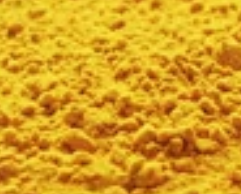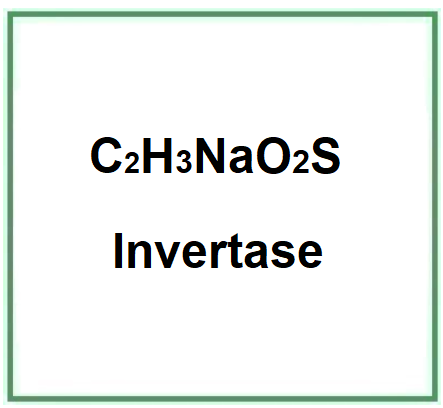Invertase is a glycoprotein, an enzyme found in microorganisms and plants, and is produced industrially by the brewer's yeast Saccharomyces cerevisiae after purification.
It appears in the form of a yellow or white powder.

What it is used for and where
Food
Ingredient included in the list of European food additives as E1103 with the function of acidity regulator, stabiliser. It is used in the production of artificial honey. It acts as a catalytic agent to obtain an artificial sweetener.
Other uses
Important enzyme for sucrose inversion in the preparation of invert sugar and high-fructose syrup (1). It participates in the production of plasticising agents that are used in cosmetics.
Medical
It is an antioxidant and antimicrobial useful in treating intestinal fermentation and reducing intestinal disorders
- Molecular Formula C2H3NaO2S
- CAS 9001-57-4
- UNII
- EC Number 232-615-7
References_____________________________________________________________________
(1) Kulshrestha, S., Tyagi, P., Sindhi, V. and Yadavilli, K.S., 2013. Invertase and its applications–a brief review. Journal of pharmacy research, 7(9), pp.792-797.
Abstract. Invertase, also called beta-fructofuranosidase cleaving the terminal non-reducing beta-fructofuranoside residues, is a glycoprotein with an optimum pH 4.5 and stability at 50 °C. It is widely distributed in the biosphere especially in plants and microorganisms. Saccharomyces cerevisiae commonly called baker's yeast is the chief strain used for the production and purification of the enzyme. Invertase in nature exists in different isoforms. In yeasts, it is present either as extracellular Invertase or intracellular Invertase. In plants, there are three isoforms each differing in biochemical properties and subcellular locations. Invertase in plants is essential not only for metabolism but also help in osmoregulation, development and defence system. In humans, the enzyme acts as an immune booster, as an anti-oxidant, an antiseptic and helpful for bone cancer or stomach cancer patients in some cases. The present study focuses upon the Invertase along with its application and purification from Saccharomyces cerevisiae. Invertase from baker's yeast was purified by concentrating the crude extract with ammonium sulphate (70%), dialyzed using sample buffer (0.1 M Tris, pH 7.2) and followed by centrifugation. The resultant supernatant was then applied on DEAE-cellulose column equilibrated with Tris buffer. The enzyme was eluted with a step gradient of NaCl (0–0.5 M) in starting buffer. Fractions showing highest activity were pooled. The result contains the purification summary with the purification fold of 27.13 and recovery of 31.93%. For the better understanding the mechanism and structure of the purified enzyme characterization is essential.
![]() Invertase
Invertase 


